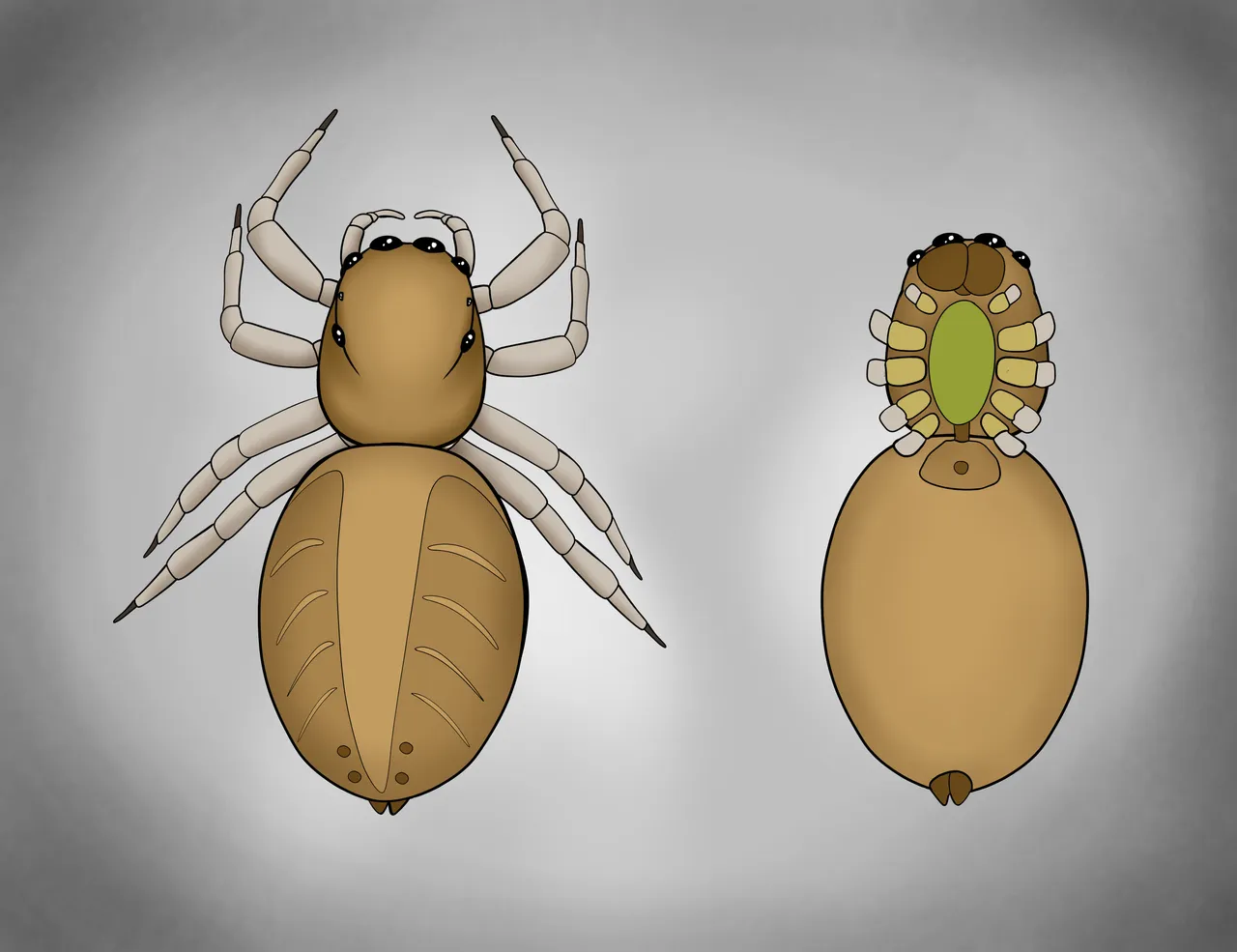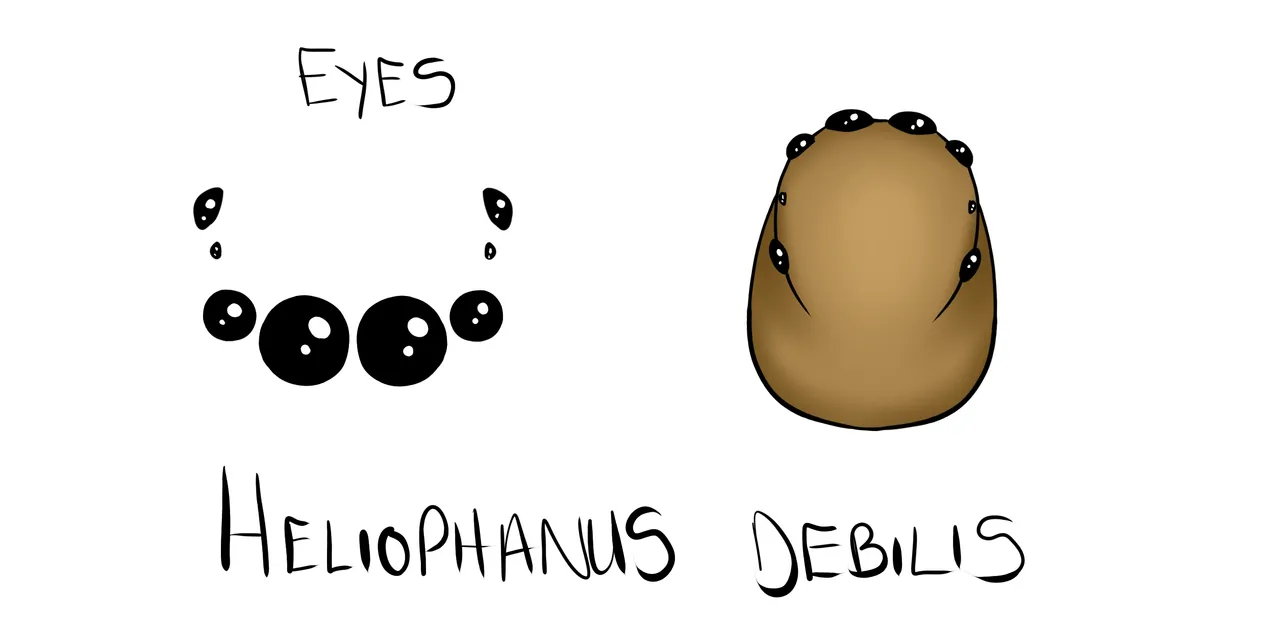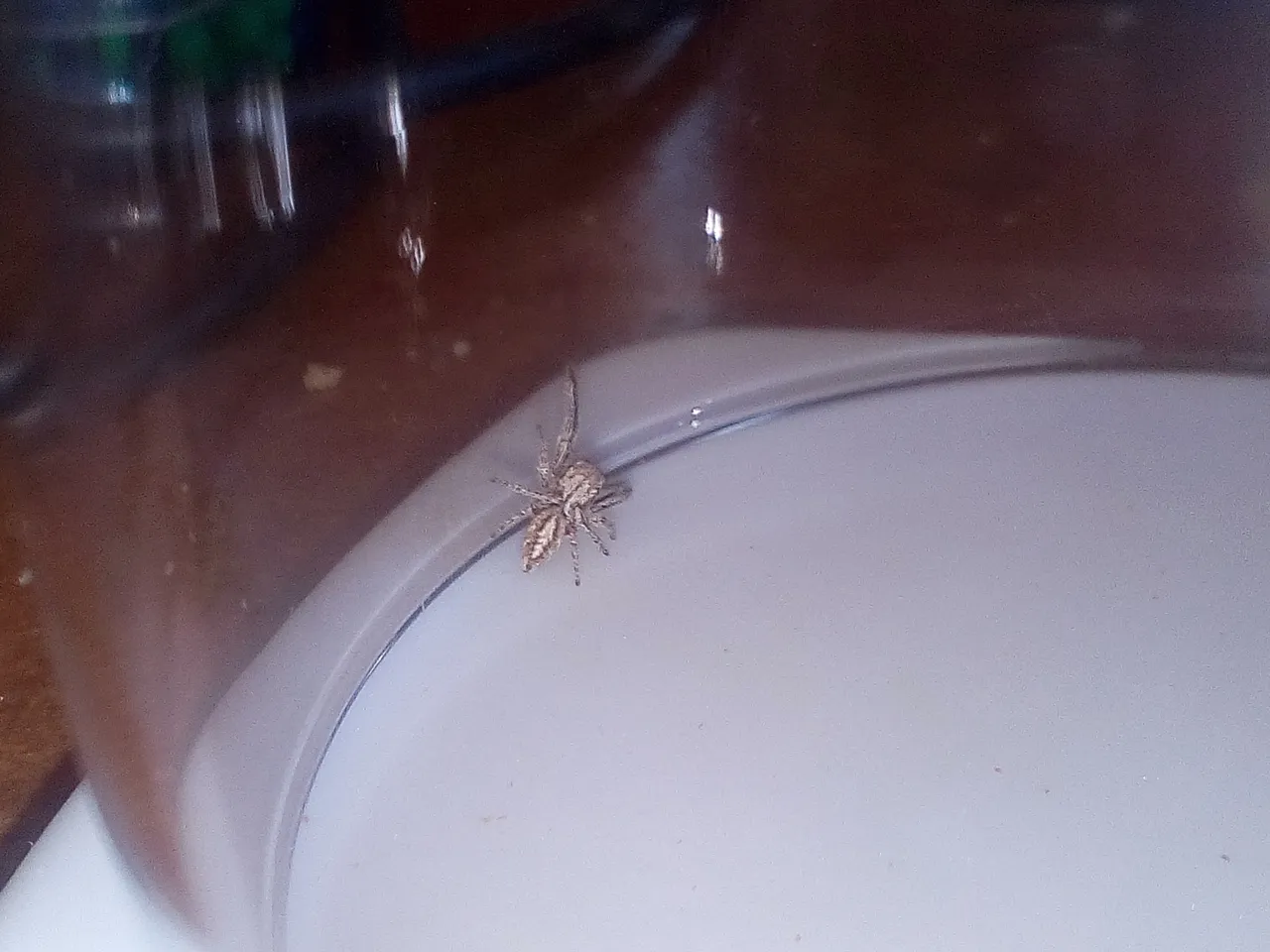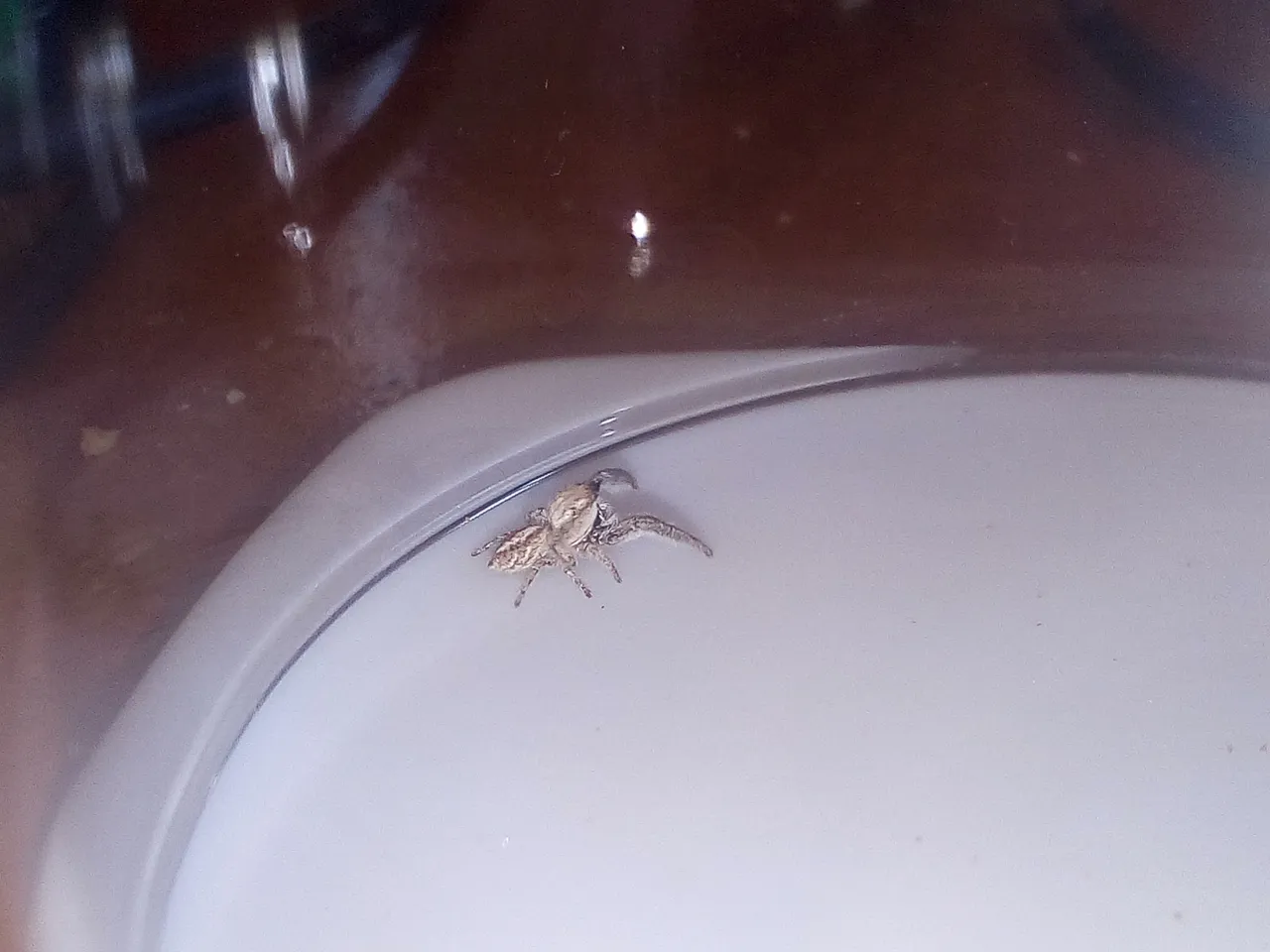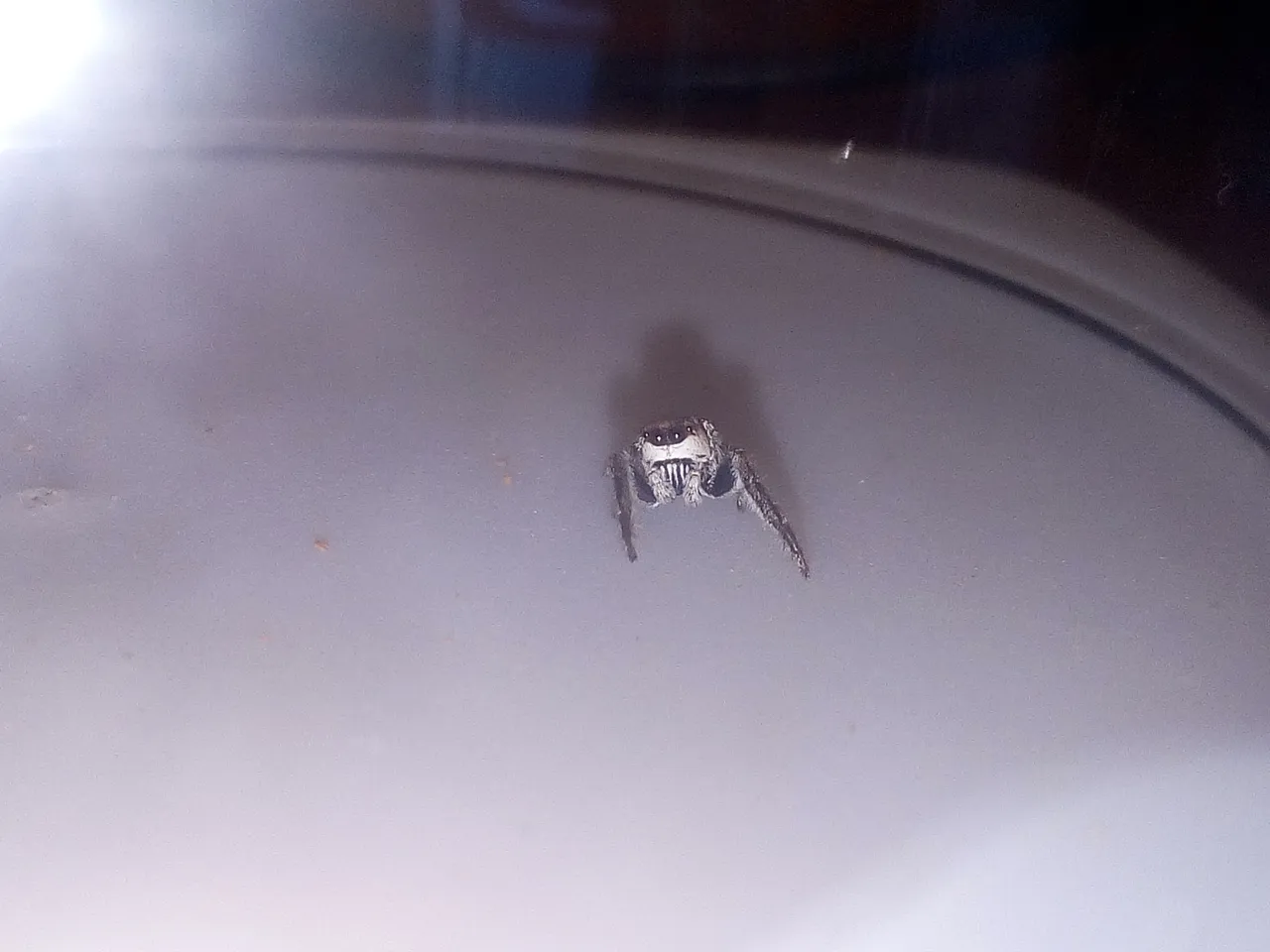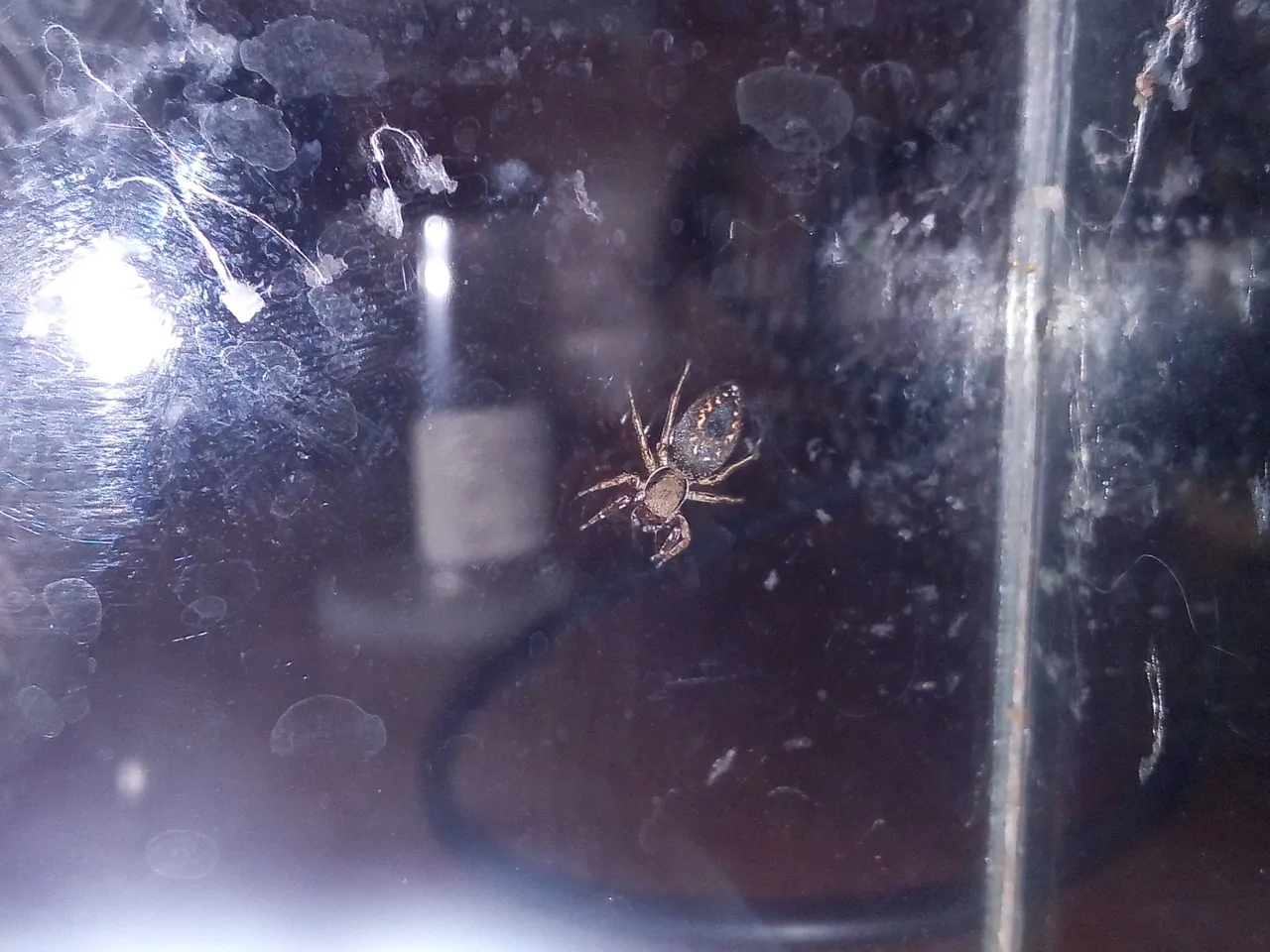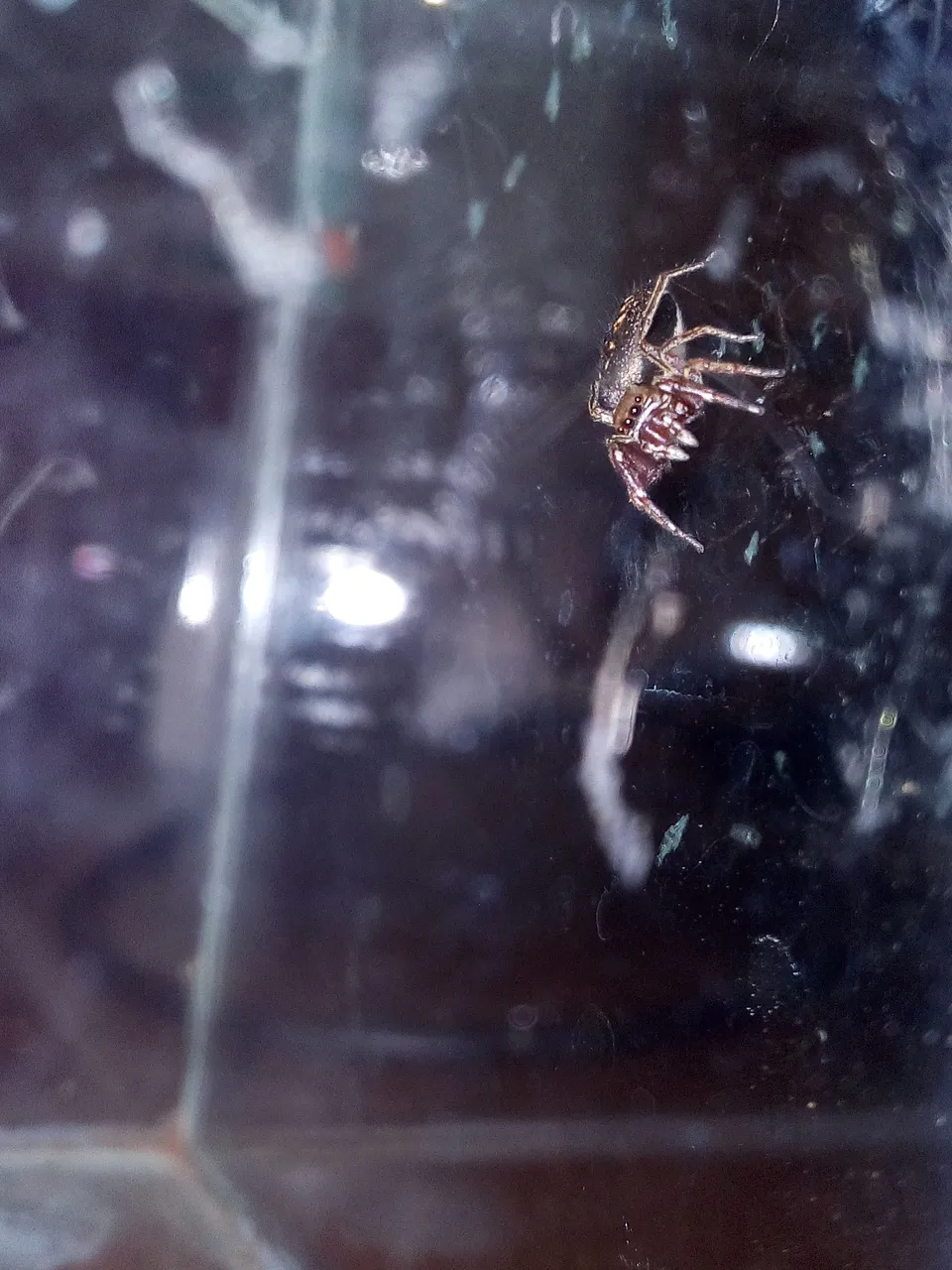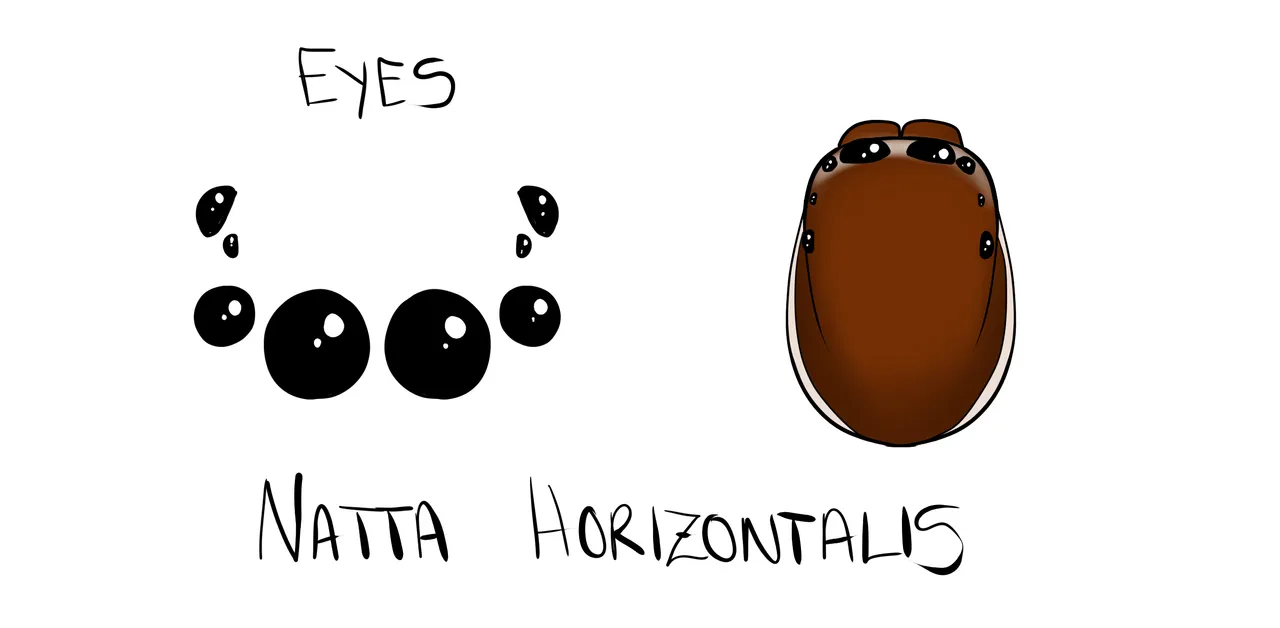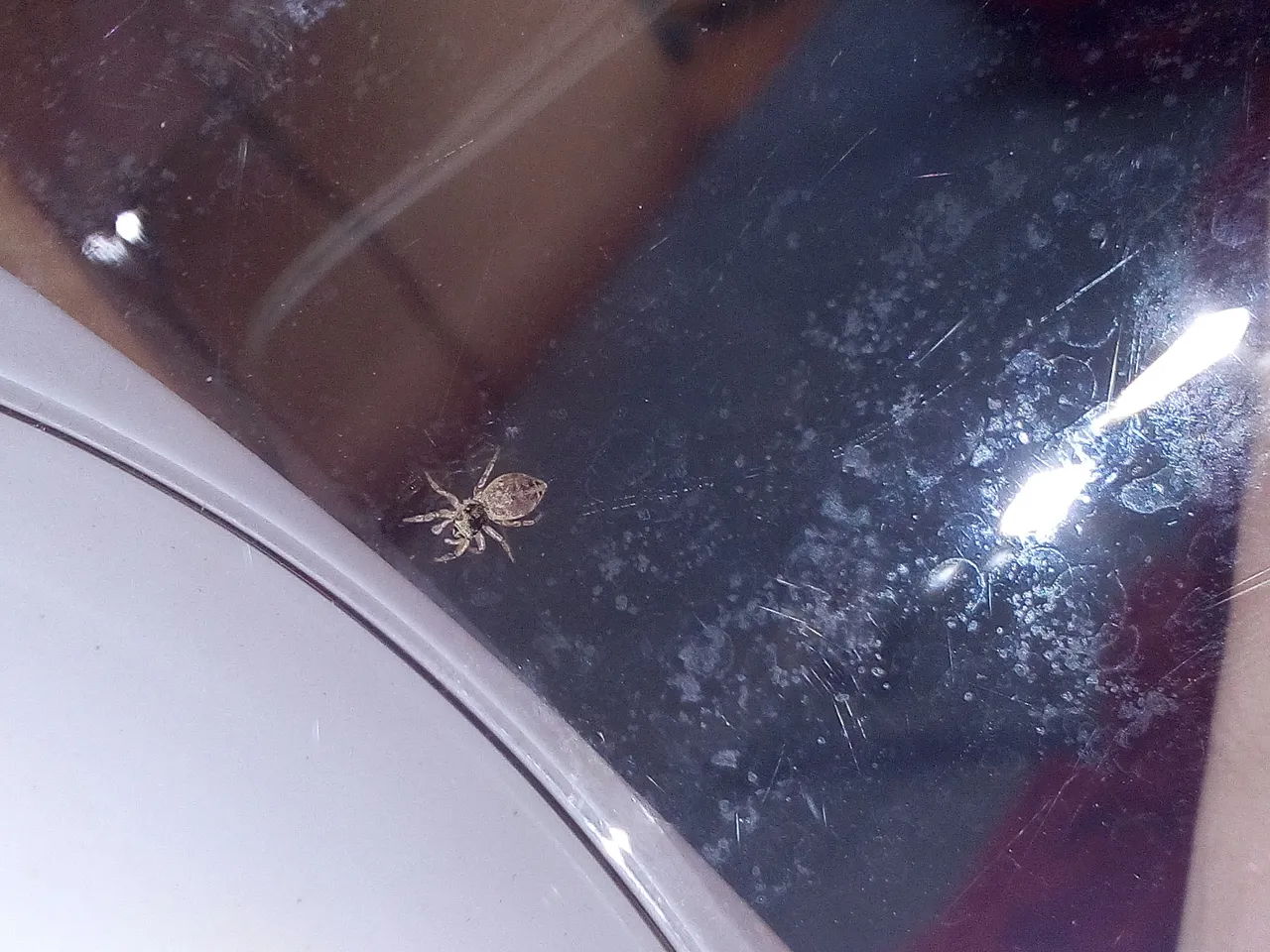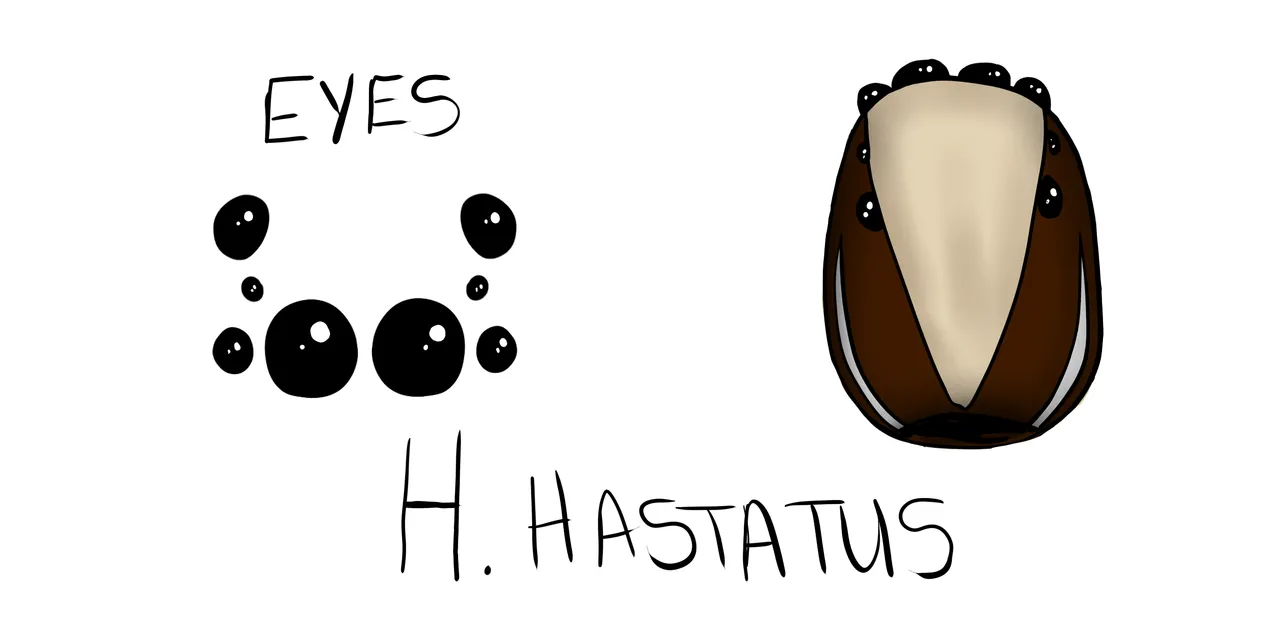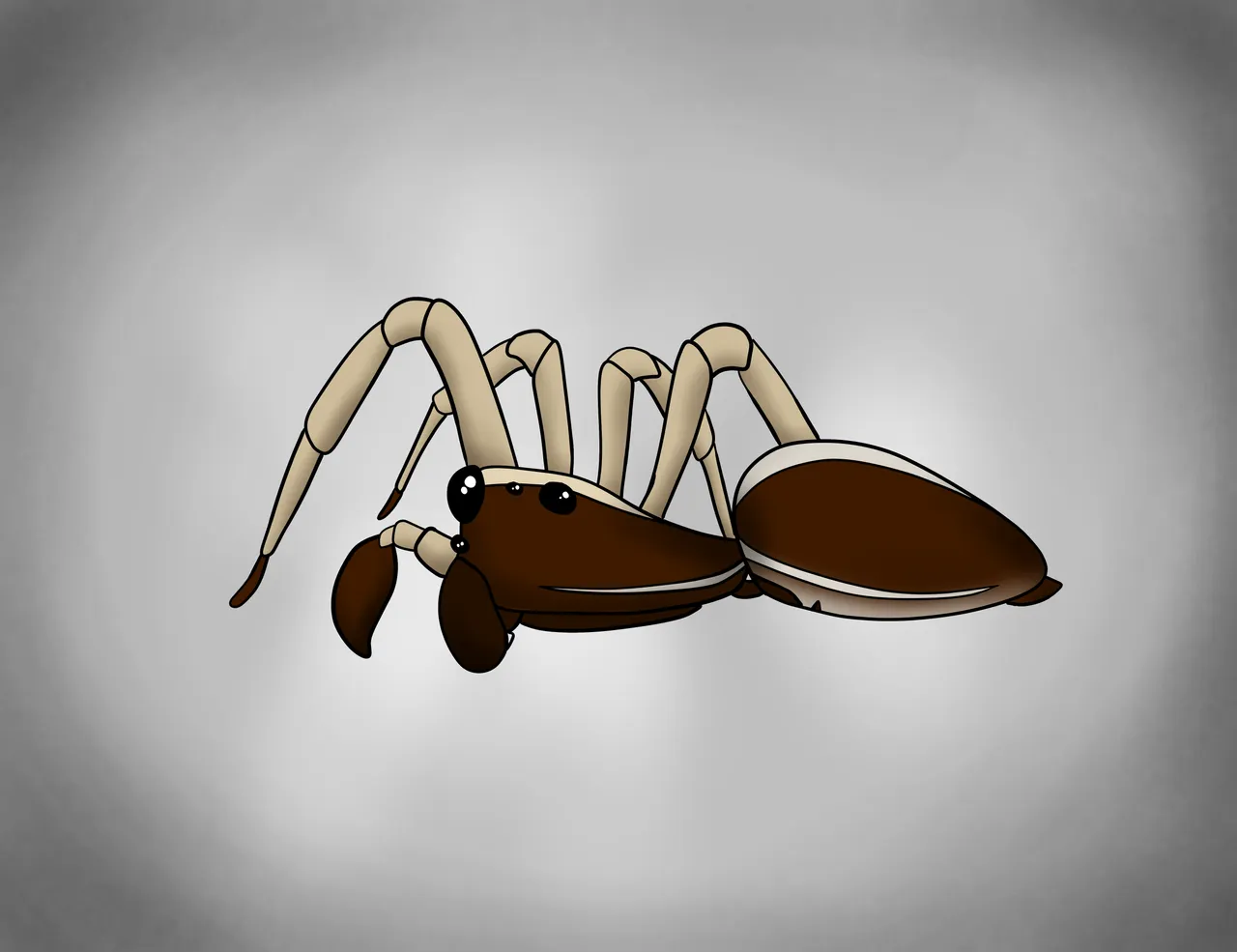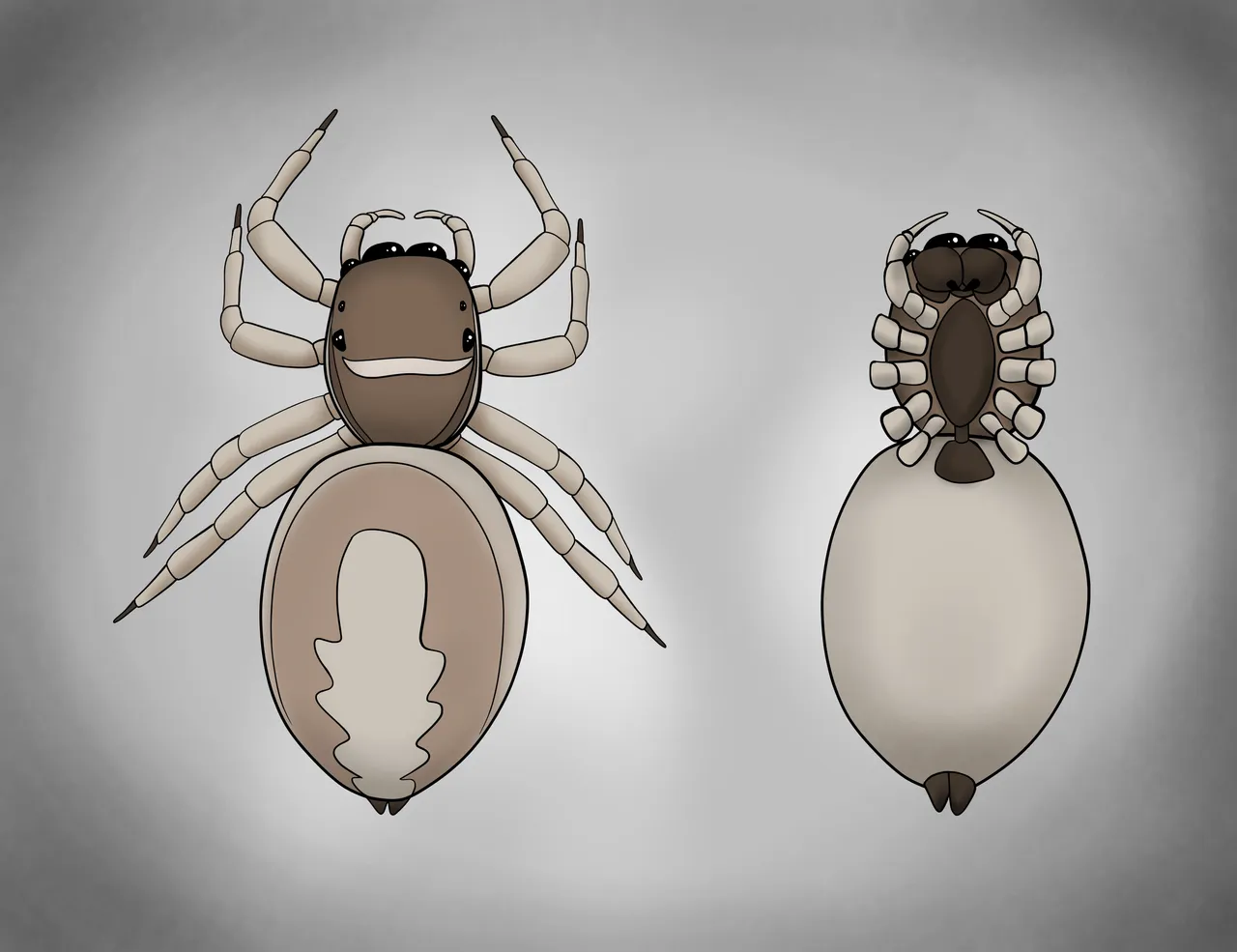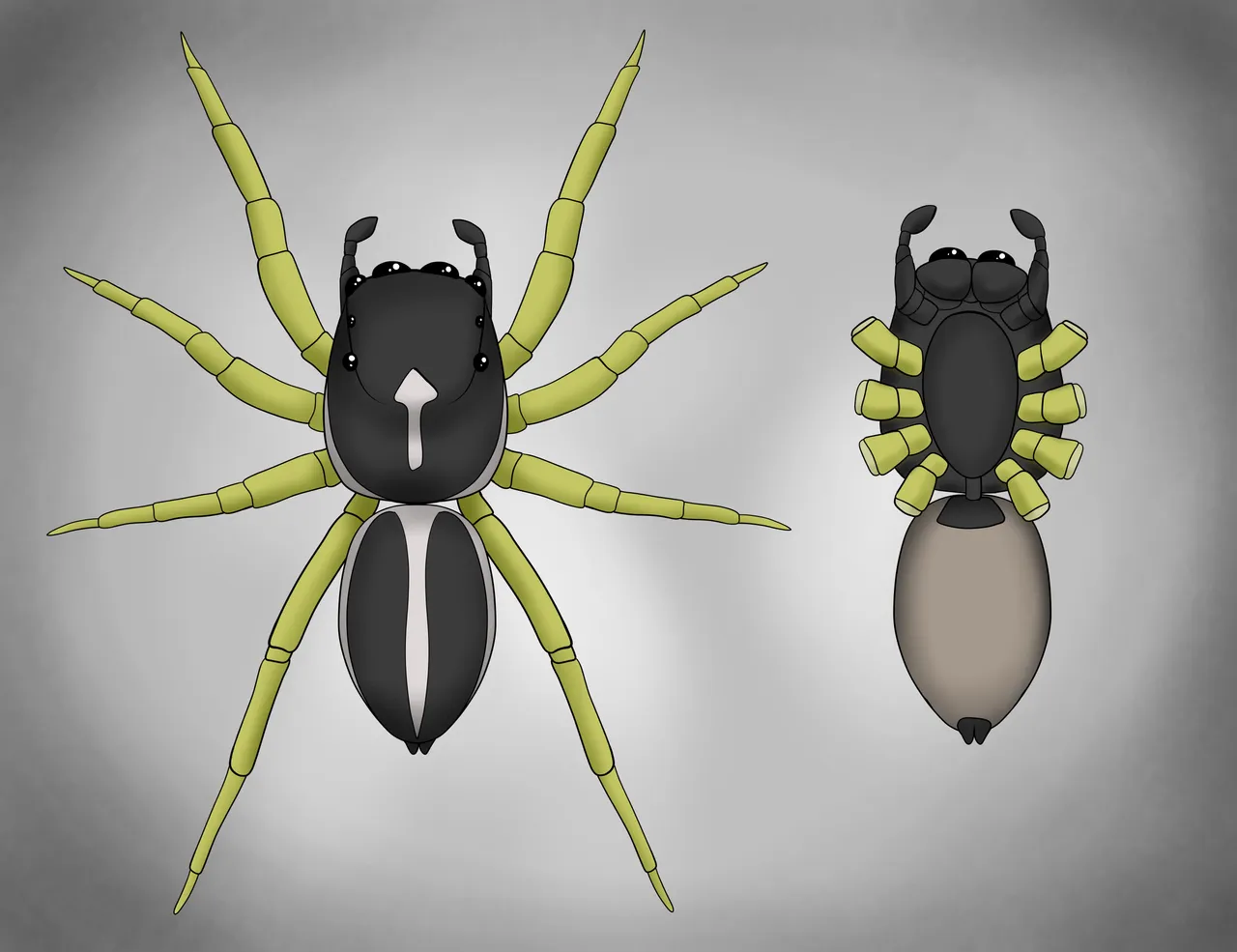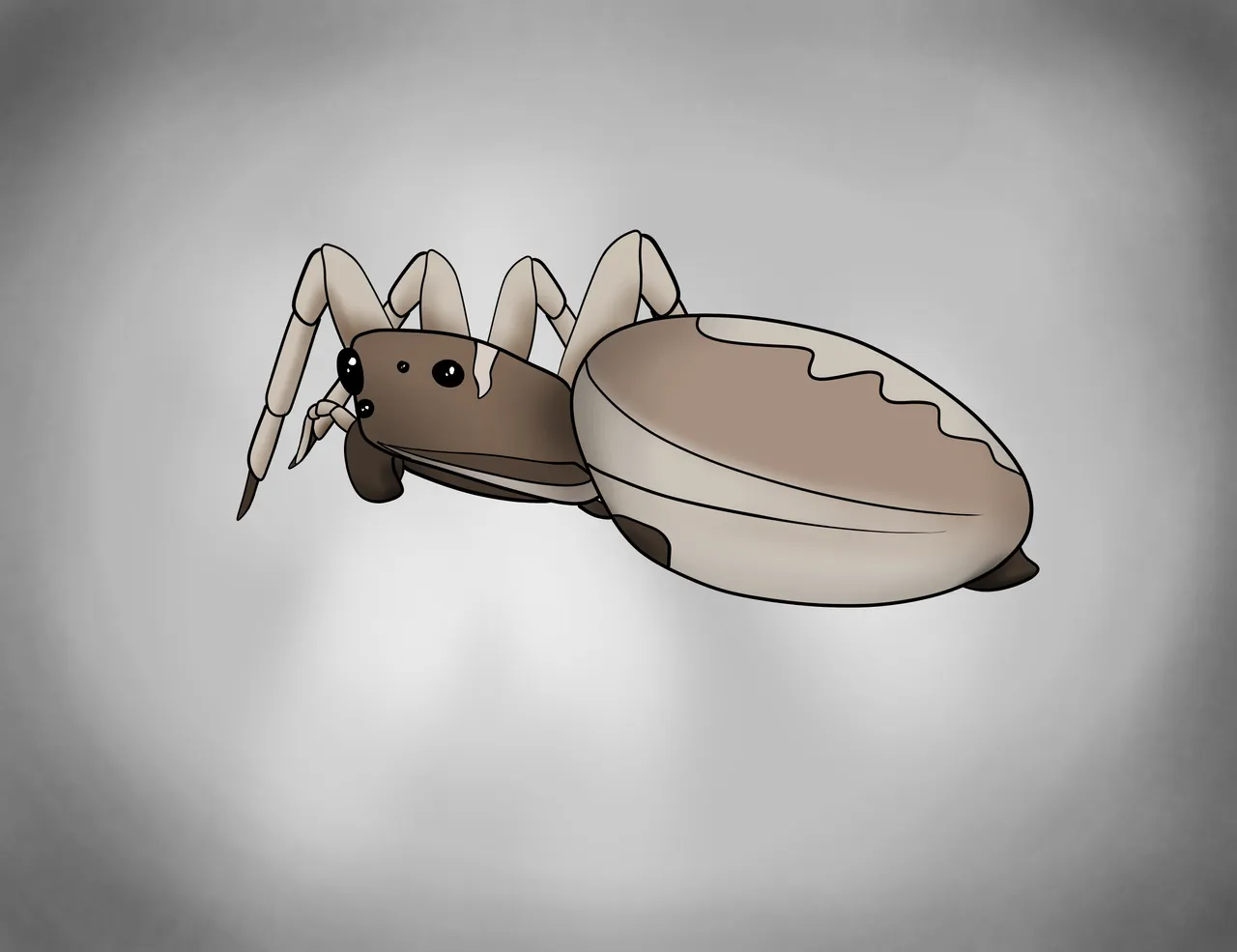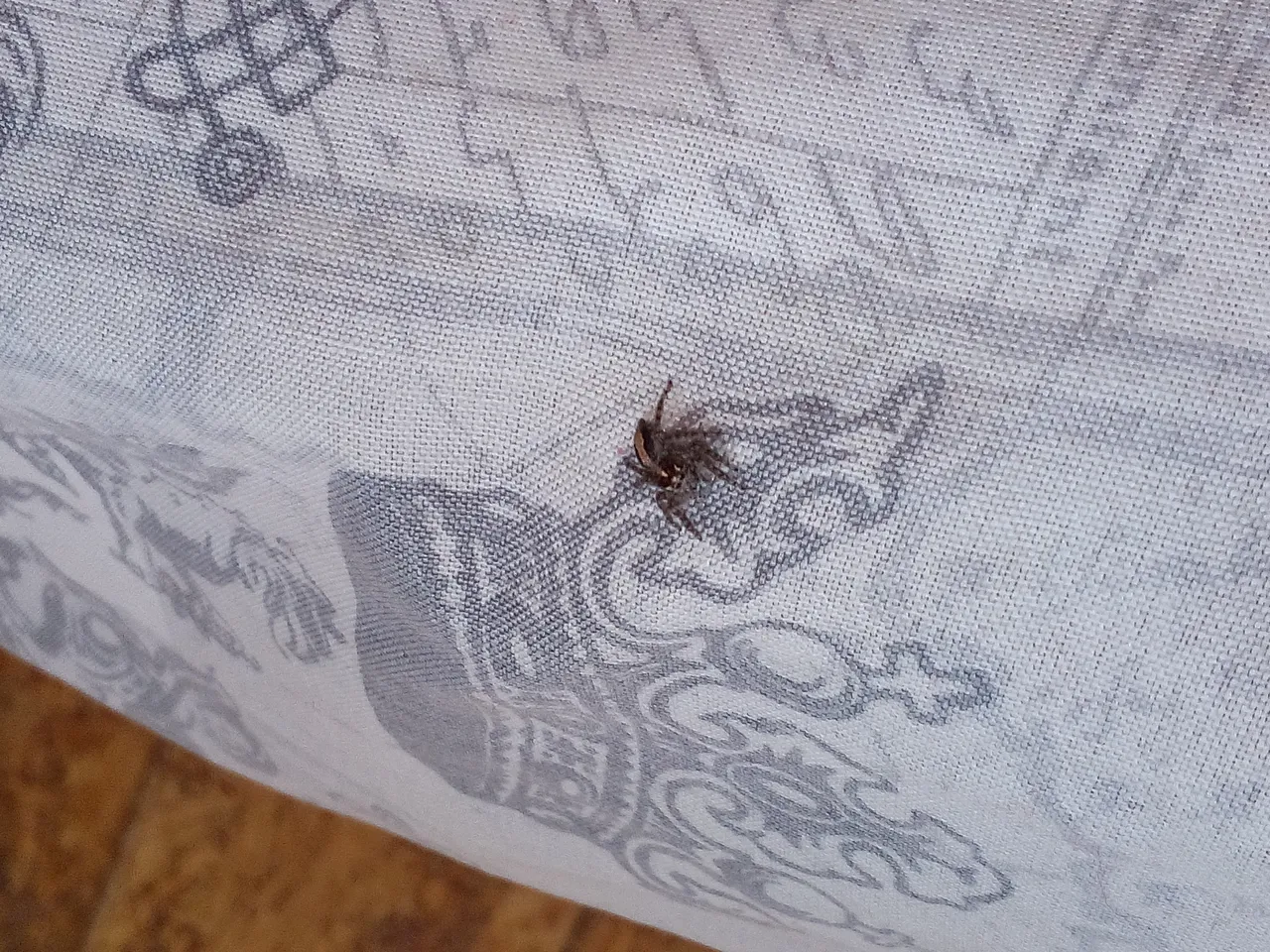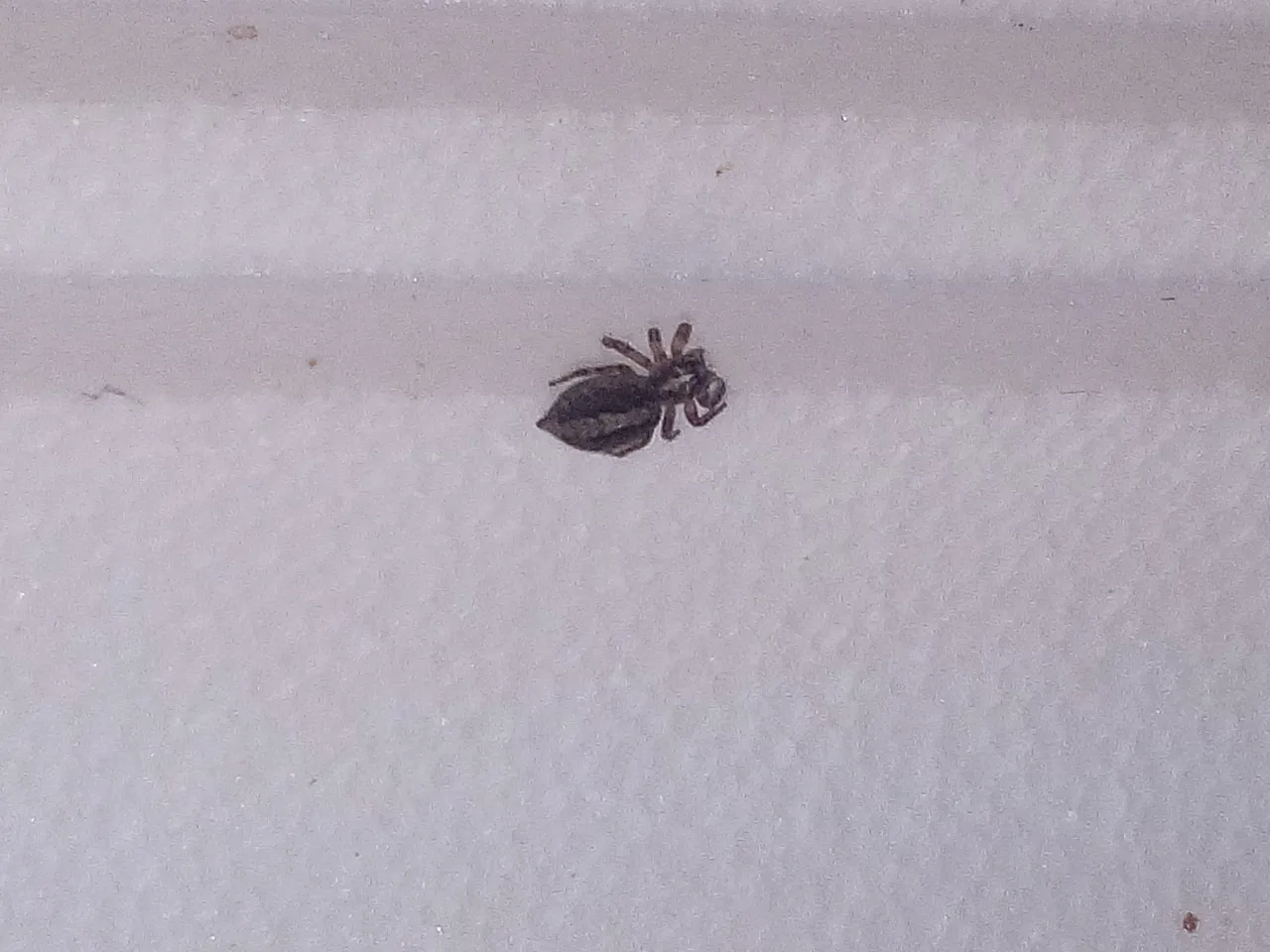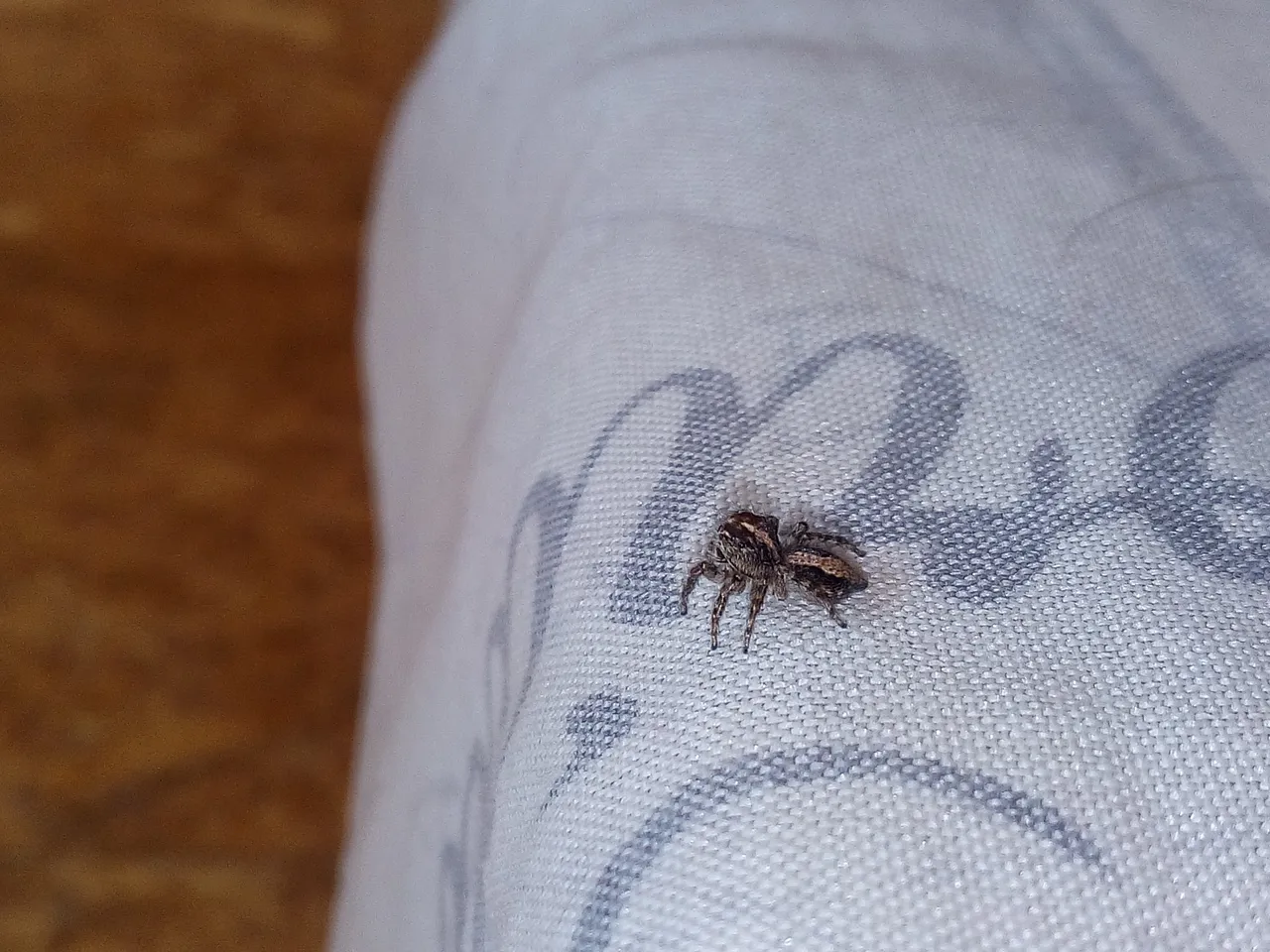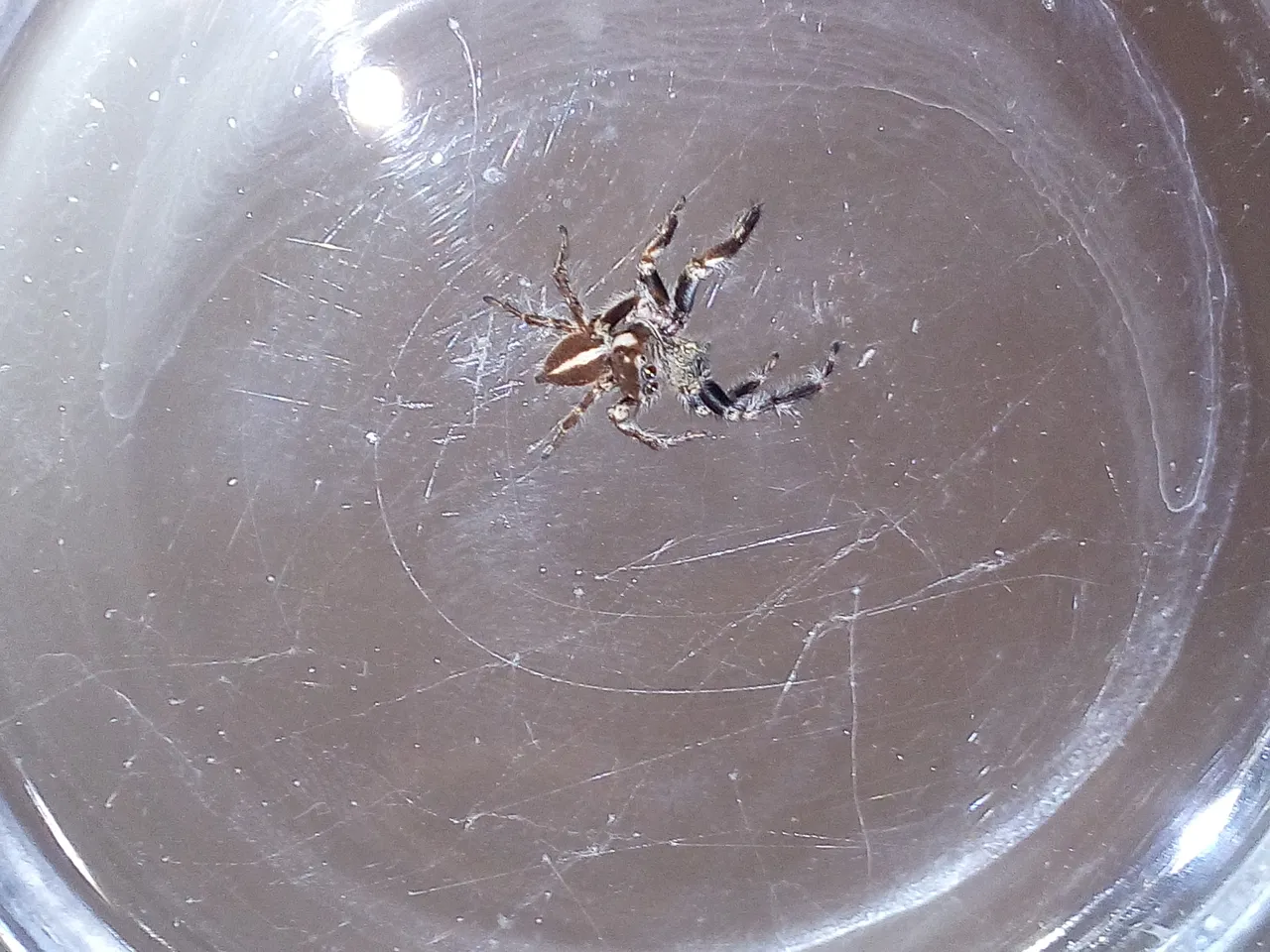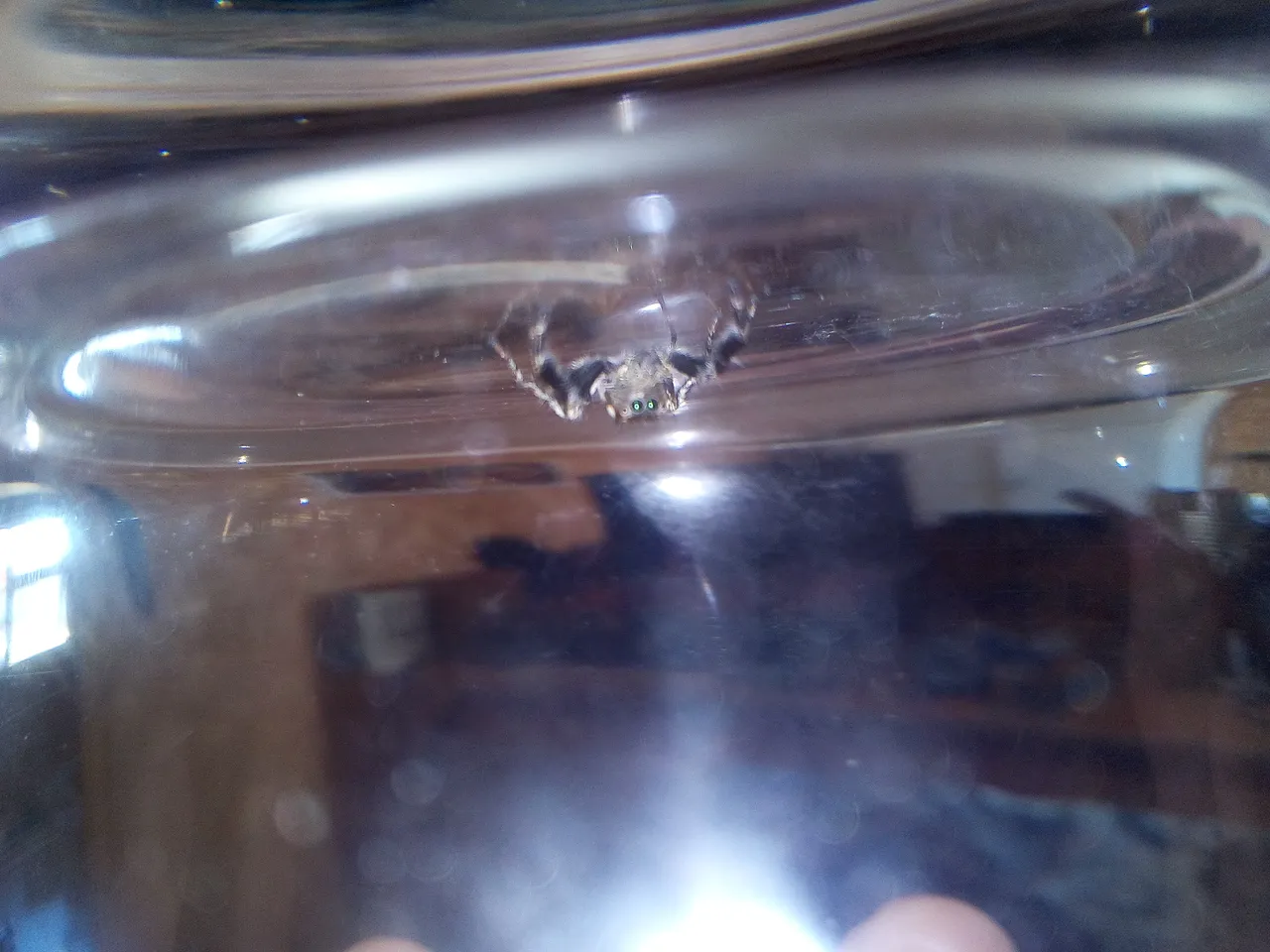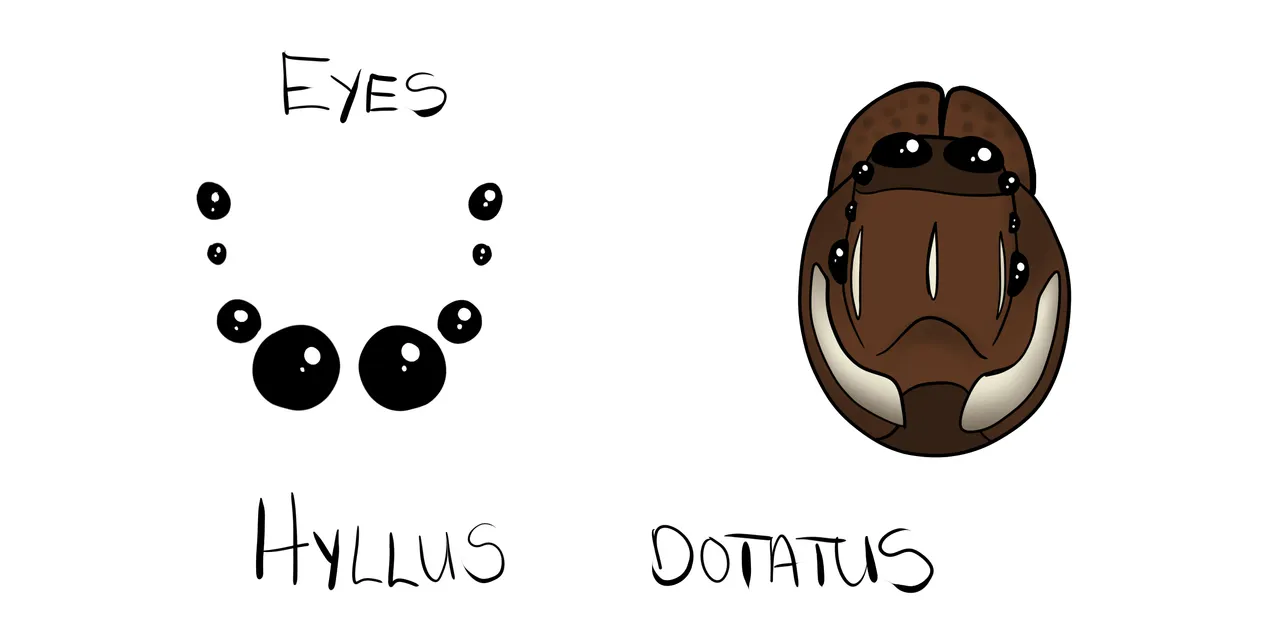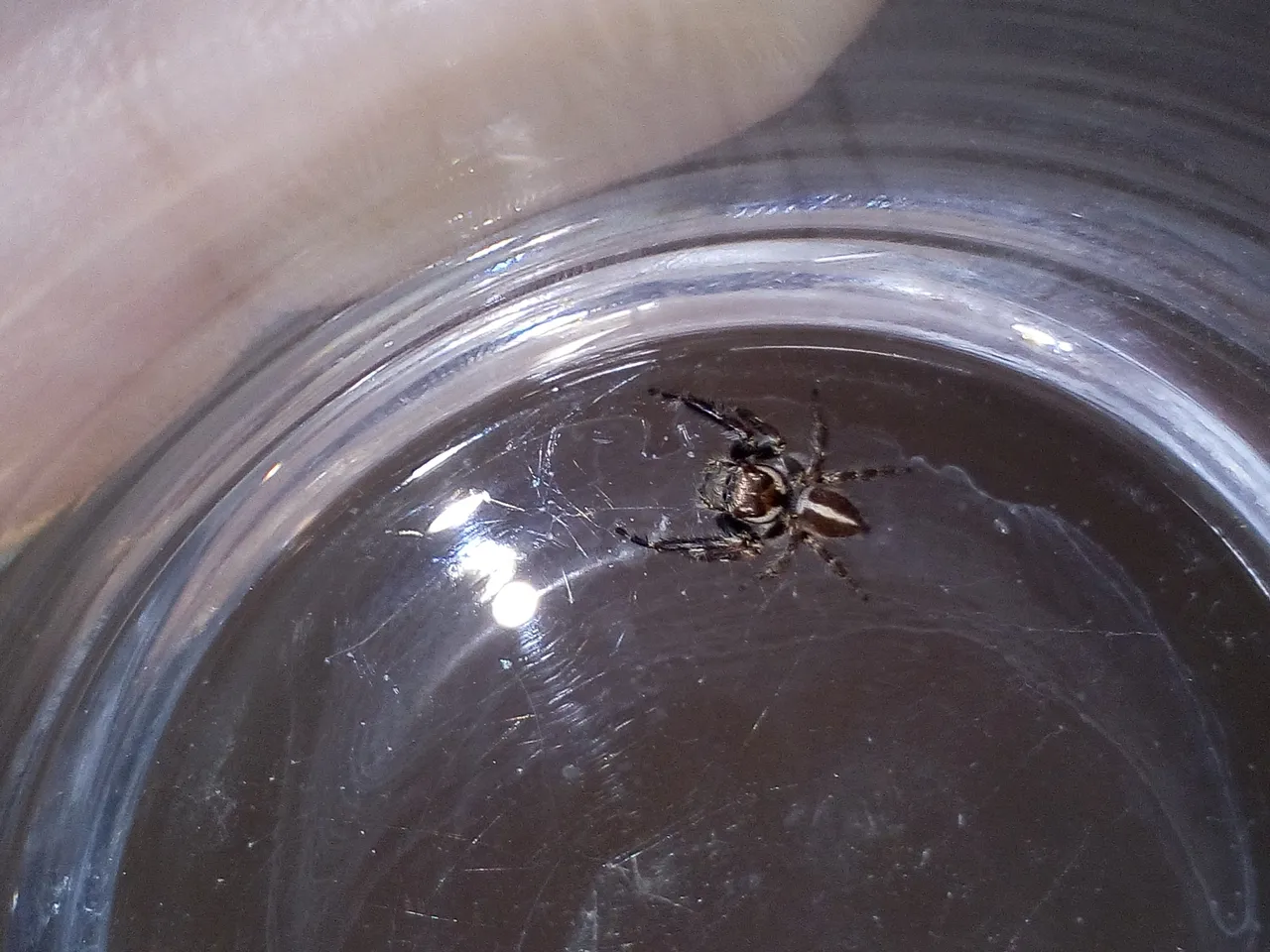Taxon:
- Class: Arachnida
- Order: Araneae
- Infra-Order: Araneamorph (true spiders)
- Family: Salticidae
- Genus: Heliophanus
- Species: H. debilis
Female
Around 5mm in body length. Leg span of approximately 8mm diagonally.
Cephalothorax:
Carapace sandy brown with white clypeus. Dark chelicera. Sternum oval and greenish yellow. Pedipalps light and hairy.
Abdomen:
Abdomen large oval and tapered, sandy brown. Dorsal with faint light line down centre, faint stripes on sides, and 4 small dark spots posterior with dark spinnerets. Ventral plain with tiny dark spot on epigyne.
Legs:
Sandy brown legs with darkened tarsi.
Male
Unknown.
ABOUT THE GENUS
Spiders in this genus can grow to be comparatively large for a jumping spider, though still are small spiders as a whole. They are also one of the more commonly encountered genera of jumping spider in Orania thus far, with the most species variation in the area as well.
Like most jumping spider genera, the Heliophanus species consist of a dull-coloured female, often larger, and a more vividly coloured male, often smaller especially in the size of the abdomen.

